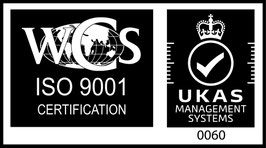The Isle of Man Government recognised a climate change emergency in June 2019.
A Tynwald motion brought forward a Climate Change Bill and action plan which would see the current and future administrations tackling the effects of climate change in line with the recommendations of the United Nations’ Intergovernmental Panel on Climate Change (IPCC). The Government is to lay its Climate Change Action Plan before Tynwald later this month. This week the IOM Government has published an independent report on achieving carbon reduction targets and an action plan for achieving net-zero emissions by 2050.
Professor James Curran has written a report for the Council of Ministers. The report starts by outlining the international background to its findings. Signatories to the 2015 Paris Agreement are committed to “holding the increase in the global average temperature to well below 2°C above pre-industrial levels and pursuing efforts to limit the temperature increase to 1.5°C above pre-industrial levels...” An IPCC report published in 2018 has stated that this will require a 45% reduction in CO2 emissions by 2030 while reaching net-zero emissions by 2050 to maintain a relatively safe future climate.
In simple terms, ‘net-zero’ refers to the point at which the vast majority of greenhouse gas emissions have reduced to the point that only a small amount of unavoidable emissions remain (for example from aviation, shipping and some industrial and agricultural processes). These residual emissions must then be balanced by the removal of greenhouse gases from the atmosphere, for example by absorption by trees, vegetation and marine plants, or artificial capture and storage.
The motivation for the Isle of Man to act, according to the report, is to reap the economic and social benefits of adoption of accelerated climate solutions, such as new sustainable industries and job creation, cleaner air and preservation of biodiversity and the environment. The flip side is that those who fail to take action will incur high cost and economic damage.
If the Isle of Man does not pursue a planned and managed transition to net-zero, it risks a chaotic future. Plentiful and reliable traditional products, such as petrol vehicles and fossil fuel boilers, will be phased out in the international market place. If we do not plan and act appropriately, we will lack the local infrastructures, such as electric vehicle charging networks and a strengthened electricity grid, meaning we can not support the replacement technologies.
Climate action is, therefore, a matter of national security from this point of view.
The report explores two possible pathways for the Isle of Man to reach net-zero by 2050, both of which are based on the scientific analysis provided by the IPCC. The ‘lower ambition pathway’ would achieve an interim target of 25% reduction in CO2 territorial emissions by 2030, relative to a 2010 baseline, in line with the global requirement to limit planetary warming to 2°C. A ‘higher ambition pathway’ would achieve an interim reduction of 45% by 2030, meeting the need for a 1.5°C limit on planetary warming. The report strongly recommends the higher ambition pathway.
Five key action areas, covering around 80% of current IoM carbon emissions, are identified for the first ten years. These are:
- peatland restoration & forestry planting
- energy efficiency in buildings
- electrical generation by renewables
- heating of buildings
- vehicles
Commercial/industrial and agricultural emissions roughly account for the remaining 20%, although actions will be pursued in these sectors as well. Heating of buildings is the single most significant contributor to Island emissions, at 35%. In summary, the report projects (please note that these assumptions and indicative numbers require further substantiation), that each of these key action areas could contribute to the higher ambition pathway target of 45% emissions reduction by 2030, as follows:
- Peatland restoration & forestry planting: planting 6000ha of new woodland, giving a 3% reduction.
- Energy efficiency in buildings: interest-free loans to households for domestic energy efficiency upgrades, giving a 10% reduction
- Electrical generation by renewables: 150MW of onshore wind generation, and 50MW of onshore solar, giving a 15% reduction
- Heating of buildings: conversion of fossil fuel heated houses electric heating by air-source heat pumps, electric boilers or storage heaters, giving a 10% reduction
- Vehicles: a third of all vehicles electric by 2030, giving a 7% reduction.
The report estimates that the total public + private cost for the higher ambition pathway for the first ten years would be in the order of £52M per year, which it states is 1% of GDP.
The Isle of Man Green Party has challenged the premise that the Isle of Man has until 2050 to achieve net-zero emissions, and issued a publication titled “A First Carbon Budget for the Isle of Man” in anticipation of the release of the Government report. Carbon budgets enable countries to calculate their own CO2 emissions targets, based on a defined share of the total global CO2 emissions that would result in a 1.5°C (or more) global average temperature increase from pre-industrial levels.
The Green Party states that “if, from today, Isle of Man emissions per head were the same for every human on the planet, there would be a 50% probability that global average temperatures would increase by 1.5°C by 2026 (from pre-industrial levels).” The Isle of Man Green Party believes that rather than having until 2050 to achieve net-zero emissions, we should be aiming for a carbon zero Isle of Man by 2026, to have a 50% chance of keeping warming below 1.5°C. However, they do not appear to offer a detailed action plan or timeline for delivering this target. The full publication is available on the Isle of Man Green Party website.
The report (titled Isle of Man Programme for Achieving Carbon Targets (IMPACT)), and the action plan (titled Isle of Man Government Action Plan for Achieving Net Zero Emissions by 2050; Phase 1) can be downloaded at http://www.tynwald.org.im/business/opqp/sittings/20182021/2019-GD-0102.pdf and http://www.tynwald.org.im/business/opqp/sittings/20182021/2019-GD-0101.pdf respectively.
| bg-primary | |
| bg-primary-light | |
| bg-primary-dark | |
| bg-secondary | |
| bg-secondary-dark |
| body | |
| top-header | |
| header | |
| content |
| background | |
| text color | |
| link color | |
| horizontal line |
| style 1 | |
| style 2 | |
| style 3 | |
| text color |
| social icons | |
| navigation color | |
| subnav background |
| background color | |
| navigation color |
| Template configurations |
| has-right-nav g-font has-sticky-logo has-large-header |
| Navigation styles |
| size-15 weight-400 snip-nav --line01 |
| Content styles |
| form-white |
| Footer styles |
| o-form color-white |
|
Typography |
| Heading H1 |
| weight-400 |
| Heading H2 |
| weight-400 |
| Heading H3 |
| weight-400 |
| Buttons |
| weight-400 |
| Advanced settings |
| Animations |
| Custom CSS |
|
#cc-inner .my-class { background: #000; }
|
Note: All changes made here will be applied to your entire website.





